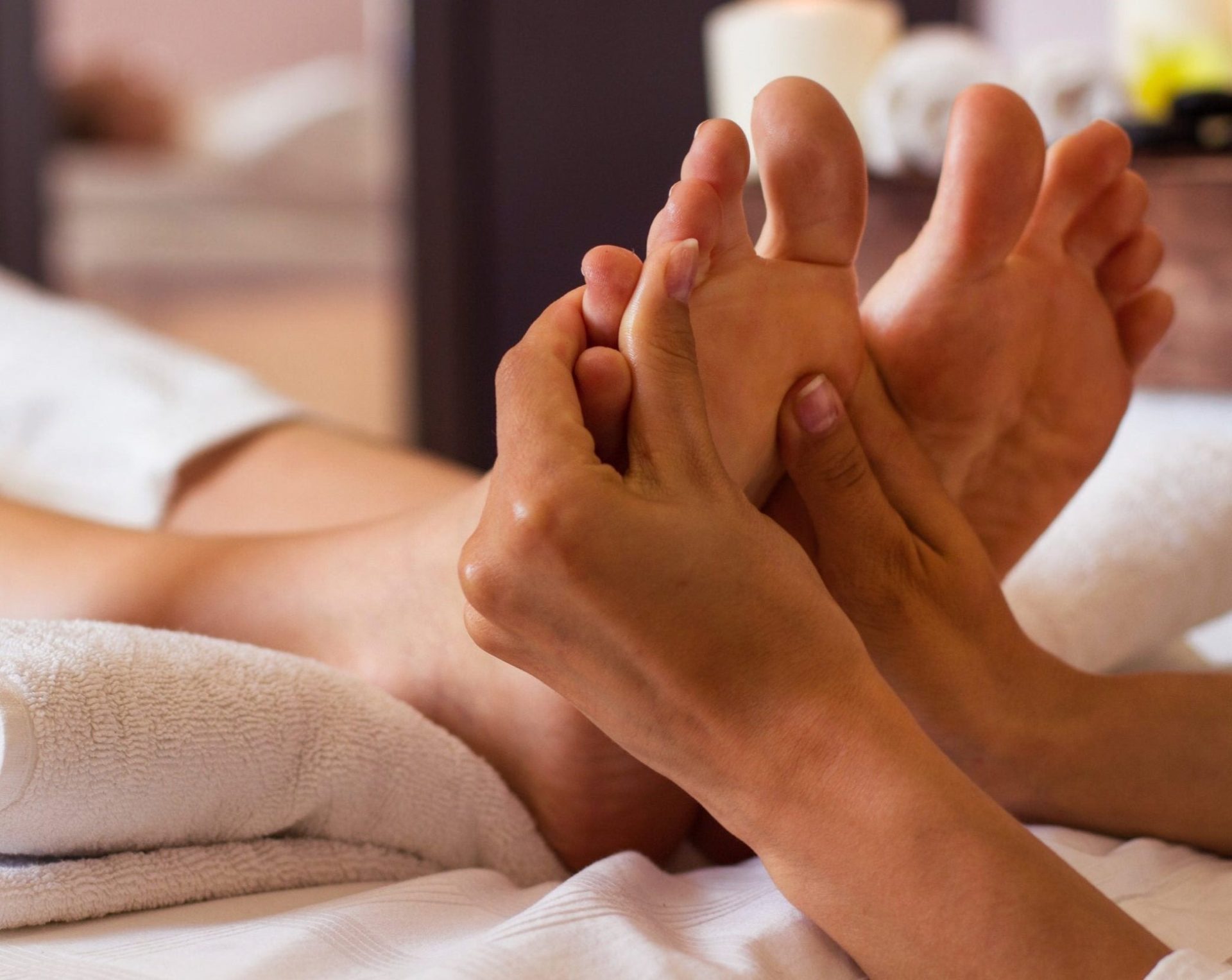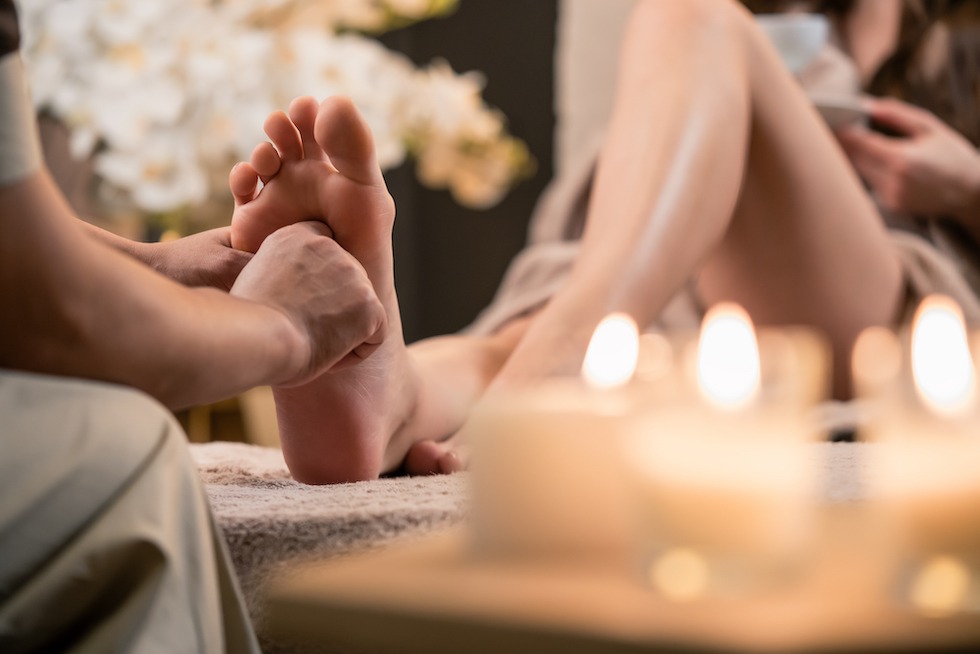Thai Foot Massage stands as an age-old therapy with a profound impact on healing and overall well-being. If you find yourself intrigued by the variations in these techniques, their healing effects, and the choice of style that suits you best, you’re not alone. This article aims to unravel the mysteries of Thai reflexology, providing insights into its healing potential for various health issues. By delving into the details of this miraculous therapy, you’ll gain a comprehensive understanding of its benefits. Let’s explore further.

What Is A Thai Foot Massage?
Thai Foot Massage, also known as Thai Reflexology, offers a distinctive and invigorating experience. This technique involves gentle acupressure, influencing the entire body, with a specific focus on the feet and lower legs. Drawing inspiration from Chinese medicine’s concept of chi and the yogic notion of prana, it goes beyond a superficial foot rub, tapping into holistic well-being.
The therapy recognizes ten primary energy lines, or meridians, in Chinese medicine, extending through the soles of the feet and connecting with internal organs. Known as Sen lines in Thai Foot Massage, their stimulation enhances the overall effectiveness of the massage, incorporating hands-on manipulation and reflex spot stimulation for rejuvenation and relaxation.
Thai Foot Massage Origin
True to its name, Thai Foot Massage finds its roots in the enchanting and exotic landscapes of Thailand. While the practice is believed to have originated over a millennium ago in India, it draws its foundations from Ayurvedic medicinal principles and was brought to Thailand by disciples of Buddha.
The prevailing belief suggests that Thai massage has its origins in India, a region rich in Buddhism and Yoga. Consequently, it mirrors the principles of the latter discipline, encompassing elements of stretching and focused concentration.
It stands as one of the four pillars of Thai medicine, alongside herbal practices, dietary considerations, and spiritual engagement. Similar to health perspectives in other Eastern cultures, an individual’s well-being is intricately connected to their physical, emotional, mental, and spiritual dimensions. This massage form endeavors to achieve equilibrium across all these planes and levels.
Traditional Thai Foot Massage Vs Thai Reflexology

Style-1: Thai Foot Massage (With no Oil)
A traditional Thai massage commences with a foot massage, gradually progressing as the therapist addresses the entire body. Typically conducted on a floor mat, the client remains fully clothed, and no oil is utilized during the session.
The absence of oil involves techniques such as sliding or stroking movements, incorporating pressure points, foot manipulation, and stretching. Therapists employ their thumbs, forearms, elbows, and even their knees and feet while working on the spine and various positions, including susceptible and side postures.
Style-2: Thai Reflexology
The second type is exclusively dedicated to the feet and is not integrated into a full-body massage. In this session, the client comfortably sits in a chair and places their feet on a stool.
As the therapist focuses on the feet, they typically sit on a small stool or chair. Given that this foot massage involves the use of oil or lotion, the techniques predominantly consist of stroking movements using the thumbs, knuckles, or entire palms.
It serves as the Thai counterpart to foot reflexology. While it doesn’t strictly adhere to reflexology principles, it blends general foot massage therapy with attention to other areas of the body. This type of foot massage often involves a specific focus on the calf muscles.
As a concluding aspect of the foot massage treatment, clients also receive attention to the neck, shoulders, arms, and hands. Following this, the client sits on a stool with their foot resting on the floor, while the therapist stands.
While distinct in their systems, both are part of the same bodywork family. Many foot massage practitioners are well-versed in Thai massage, leading to specific overlaps between the two. For instance, it’s common for therapists to incorporate foot stretches into a reflexology treatment.
What Does Thai Foot Massage Do To Your Body?

Improve the performance of muscles, joints, and tendons
The feet, enduring the constant weight and pressure of the body, are heavily utilized and frequently strained. Foot massage fosters flexibility and relaxation in muscles, joints, and tendons, promoting more efficient performance. This effect was observed in a study on diabetic patients, showcasing the potential to relax foot muscles and enhance overall movements.
Improve Blood Circulation and Harmonize the Physiological System
- Thai massages contribute to increased blood and lymph flow in the muscles of the foot soles, acting as a stimulus for nerve centers. Consequently, internal organs function with heightened efficiency, fostering improved body balance and overall health. These benefits become more apparent as one ages, particularly for individuals not engaged in activities requiring the same physical exertion as younger counterparts.
Relieve stress and calm your mind
Foot massage provides a spa-like experience for your feet, facilitating relaxation and the alleviation of muscular tension and anxiety. Traditional Chinese medicine suggests that the soles of the feet have nerve connections to the brain.
Research indicates that Thai Foot Massage can contribute to the reduction of migraines, offering the brain a respite and promoting a sense of tranquility. Consequently, improved mental well-being may lead to better and more extended sleep.
You know a lot more about your organs than you believe
In line with Chinese medicine, the soles of the feet serve as nerve centers intricately linked to the body’s internal organs. By applying pressure to specific points on the soles, one can discern areas of potential trouble within the corresponding organs.
The discomfort experienced when pressing a point associated with an organ signifies potential dysfunction or illness in that organ. It is advisable, however, to undergo a comprehensive physical examination to assess recurring symptoms of any potential sickness or ailment.
Complementary therapy for traditional medicine
Receiving a foot massage from a skilled masseuse is generally considered safe, as it involves no medications or chemicals. Consequently, traditional medicine incorporates foot massage as a complementary treatment for individuals dealing with conditions such as stroke, rheumatoid arthritis, and musculoskeletal disorders. The positive impact of foot massage on therapy is evident, contributing to an enhanced quality of life for patients.
Better Sleep
For those grappling with sleep difficulties, opting for a Thai foot reflexology treatment presents an appealing, natural solution. As it is advisable to undergo a foot massage before bedtime, this soothing foot massage promotes improved circulation, paving the way for a more restful night’s sleep.
How Can Thai Foot Massage Benefit Athletes?
Athletes often experience fatigue, muscle and joint pain, and the risk of injury during training. Consequently, many athletes turn to professional sports massage therapists for assistance.
Sports massage, aimed at treating sports-related injuries and enhancing an athlete’s range of motion, incorporates a combination of assisted stretches and various massage techniques, including Thai Foot Massage. This specialized approach targets specific areas requiring healing, utilizing assisted stretching to focus on particular body areas or muscle groups.
The dynamic stretches employed in Thai Foot Massage offer potentially deeper and more rejuvenating stretches compared to certain assisted stretching techniques utilized in sports massage. The energetic and revitalizing benefits of Thai Foot reflexology, combined with relaxation, contribute to athletes feeling both mentally and physically rejuvenated.
Additionally, Thai therapy improves circulation, facilitating increased oxygen flow to muscles and other tissues. This aspect may play a preventive role in minimizing injuries and promoting faster healing for athletes following intense physical activity.
What To Expect During A Thai Foot Massage?
During a Thai Foot Massage, it is customary to lie on the floor. A certified massage therapist will gently manipulate your feet and lower legs through a series of different stretches. To facilitate various foot postures, the therapist may employ their hands and massage sticks.
While there is no specific preparation required for a Thai massage, it is advisable to heed the following suggestions:
- Arrive approximately 10 minutes early to complete any necessary paperwork before the appointment.
- Inform the practitioner of any significant medical history, as Thai massage may not be suitable for individuals with certain medical conditions.
- Opt for loose-fitting or athletic attire for the session. Avoid excessively tight clothing, as it may cause discomfort and restrict your range of motion during the massage.
FAQs
What is the difference between Thai foot massage and reflexology?
Traditional reflexology focuses solely on the feet as an energy treatment. In contrast, Thai Foot Massage combines the energy healing aspects of reflexology with the therapeutic benefits of massage by extending the treatment to encompass the entire lower leg, knee, and foot.
What do you wear to a Thai foot massage?
For a Thai massage, it’s recommended to wear comfortable clothing that allows for easy stretching since you will be fully clothed during the session.
Is Thai foot massage worth it?
An in-depth review of studies examining the effects of Traditional Thai Massage on pain intensity indicates its effectiveness in providing relief for chronic pain. The findings show substantial reductions in pain levels, along with improvements in disability, muscle tension, flexibility, and anxiety.
This article is for informative reference and to explore the nuances, history, benefits, and differences of Thai Foot Massage. Note that L Spa does not provide this foot therapy, and the information provided is for educational purposes only. To learn more about our available treatments, please visit the L Spa Da Nang website.





